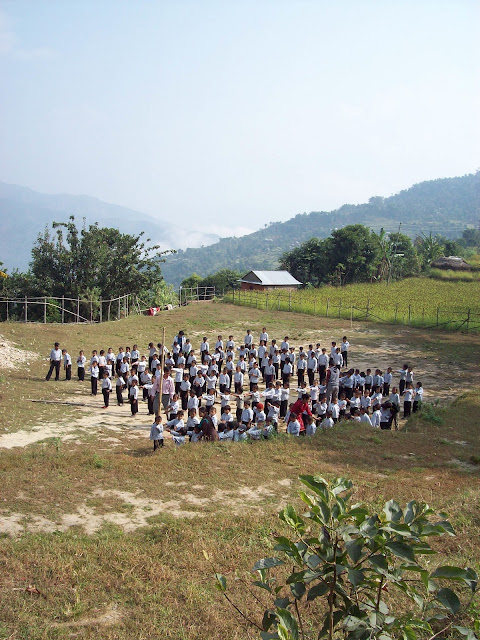Today, I want to introduce you all to our fantastic teachers!
Chandica Lal Ghising
Dil Maya Dankoti
Punya Kafle
The teachers were chosen from an open competition. Exam in progress!
Chandica Lal Ghising
Headmaster
Mathematics and Science Teacher
Chandica completed his bachelor’s degree from Tribhuban University, Nepal. He comes from Ramechap district.
Chandica has more than three years of teaching experience in two schools in Kathmandu.
He joined Peace School in June 2011. Mr. Ghising was appointed the headmaster of Peace School in August 2011.
Dil Maya Dankoti
Nepali Teacher
Dil Maya completed her bachelor’s degree in education from Tribhuban University, Nepal. She has few years of teaching experience in English medium schools in Kathmandu. Dil Maya comes from Arupokhari VDC-4, Gorkha.
She joined Peace School in July 2011.
Bikash Lama
Science, Math and English Teacher
Bikash comes from Kathmandu. He is currently pursuing his bachelor’s degree from Tribhuban University.
He has few months of teaching experience.
Bikash joined Peace School in September 2011.
Kum Tamang
Science Teacher
Kum comes from Kathmandu. He is currently pursuing his bachelor’s degree from Tribhuban University, Nepal.
Kum joined Peace School in August 2011.
Meena Sodari
Teacher: O & A levels, One
Meena is the permanent resident of Arupokhari VDC-1. She completed her bachelor’s degree from Nepal.
She has been with us since the inception of our school back in 2009.
Nirala Thapa
Teacher: O & A levels, One
Nirala completed high school and is a resident of Arupkhari VDC-2.
She is one of the teachers teaching at grade O and A levels.
Nirala has been with us since the very beginning of Peace School back in 2009.
Punya Kafle
Math and English Teacher
Punya comes from Dolakha district. He is in the final year of his bachelor’s degree program at Tribhuban University.
He has extensive experience of teaching in English medium schools in Kathmandu and Dolakha.
Punya is the newest member of Peace School. He joined in September 2011.
Rupa Thapa Magar
Sister
Rupa is a permanent resident of Arupokhari VDC-1.
She looks after grade O and A level children.
She joined Peace School in June 2011.
The teachers were chosen from an open competition. Exam in progress!
 |
| Peace School teachers and a helper (front row: first from left) |


























